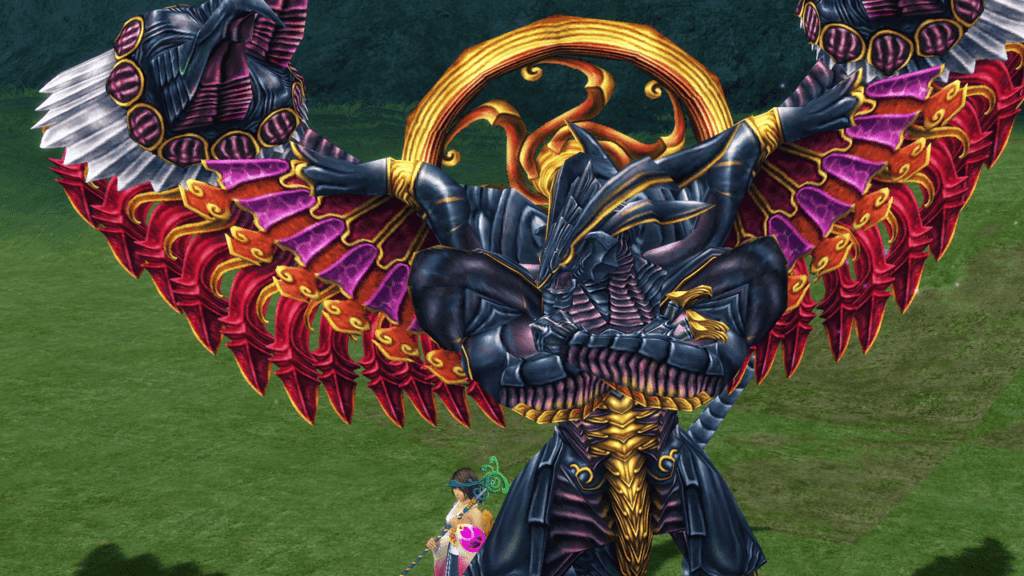The first thing I want to cover before I get ahead of myself is how to pronounce Bahamut, because there are a few accepted ways.
1) Bar-ham-ut
2) BaR-HAR-moot
3) ba-ha-mut
No matter how you pronounce it, Bahamut has become a popular character in gaming circles. Why would I want to write about games I hear you ask? Like many things in modern culture, their origins go deeper and further back. Dungeon and Dragons and Final Fantasy didn’t make him up out of thin air.
Who is Bahamut in Final Fantasy?
In final fantasy Bahamut is one of the most prominent, popular and powerful summons in the game series. In every game he has been depicted as a dragon and has been called the “gun dragon” and the “dragon king”, very fitting for such a powerful creature, and he has been both friend and foe to the characters in the game. In Dungeons and Dragons Bahamut is known as the platinum dragon, the king of good dragons and the Wyrm king, and takes the form of a very powerful draconic deity. Though their forms differ slightly, they both depict Bahamut as a powerful dragon not to be messed with, but where did the idea come from in the first place; it can’t be a coincidence that they are so similar despite their differences.
However, Bahamut didn’t start out life as a dragon, his origins lie deep within Arabic mythology – there is more information about Bahamut in popular culture than there is about the original Bahamut.
The Mythological Bahamut
In Arabic mythology Bahamut is an unimaginably large fish that swims around in the cosmic sea, and supports the world – be honest, how many of you thought of the turtle from Discworld here? Bahamut swims around the cosmic sea, which is sitting above an abyss of air. Apparently Bahamut was the size of a billion suns, which is where the unimaginably large part comes in because can you imagine how big that is? While I was doing my research for this piece, I tried to imagine a billion suns the same size as ours……… let’s settle with B.I.G.
There is a tradition that speaks of Bahamut carrying a bull called Kujata that sits on top of Bahamut’s head. On Kujata there is a ruby mountain and on this mountain us an angel. Floating over the ruby mountain and angel is six hells, and above those hells was the earth, and above the earth rests the seven heavens. All of this is sitting on Bahamut’s head… yeah!
Everything that I read while doing my research said that it would be impossible for a human to ever see Bahamut due to his colossal size, but what would mythology be without someone defying and breaking the established rules? The mythology says that in a tale called “One Thousand and One Nights” Isa sees Bahamut swimming in a vast ocean, and upon seeing the sight of Bahamut Isa was knocked out, and when he awoke, he was asked by Allah if he could comprehend the immense size of Bahamut. In response Isa said he didn’t see a fish, only a bull (Kujata) who was the length of three days. Allah told him that the three days’ length he witnessed was only the head of Bahamut.
With all of this, why did the people at Final Fantasy HQ decide to turn Bahamut from a cosmically enormous fish into a powerful dragon? To be honest I am not 100% sure, but I am still looking for answers, but the only thing I have found on the Final Fantasy front is hearsay that because they already had a water-based creature in Leviathan – a great sea serpent, that they changed Bahamut into a powerful bad-ass dragon instead. I can see why they may have done it, Leviathan is a legendary sea creature, whereas Bahamut is sort of a deity (in a fashion) and he essentially carries Leviathan on its head. The only game that Bahamut doesn’t appear as a Summon or as a dragon is in the 12th game in the series, where Bahamut is actually “The Sky Fortress Bahamut”.
I do hope you have enjoyed this new and different post, and you have enjoyed the divergence from my normal articles and will look forward to future Mythologically Inspired Popular Culture works.



